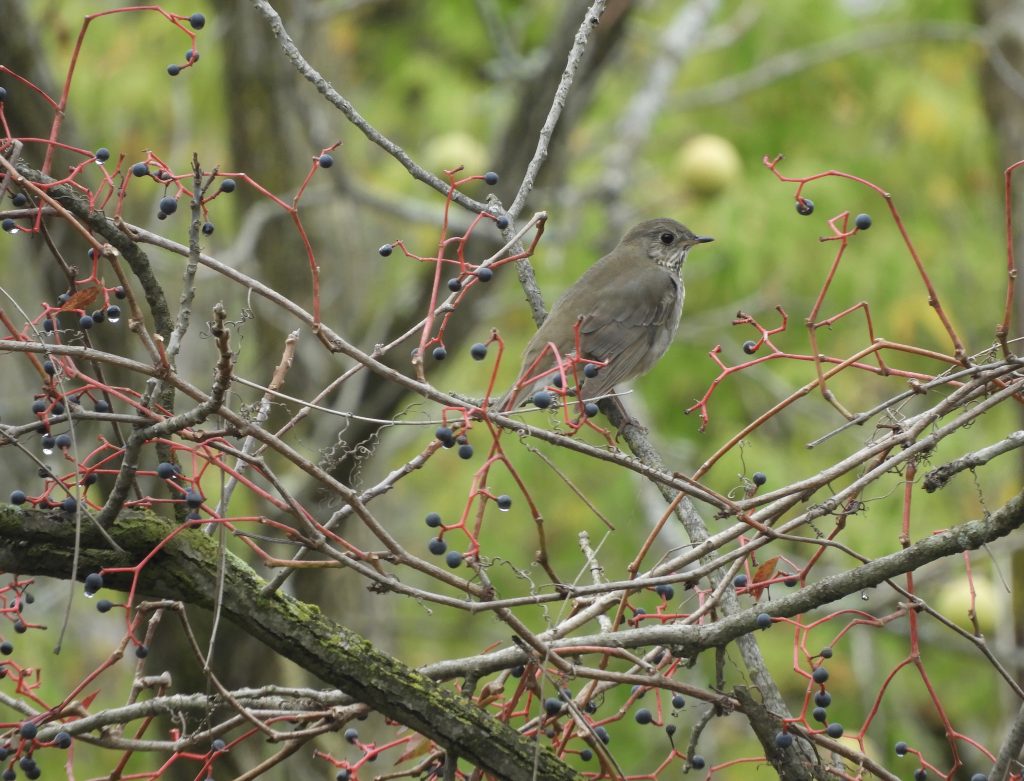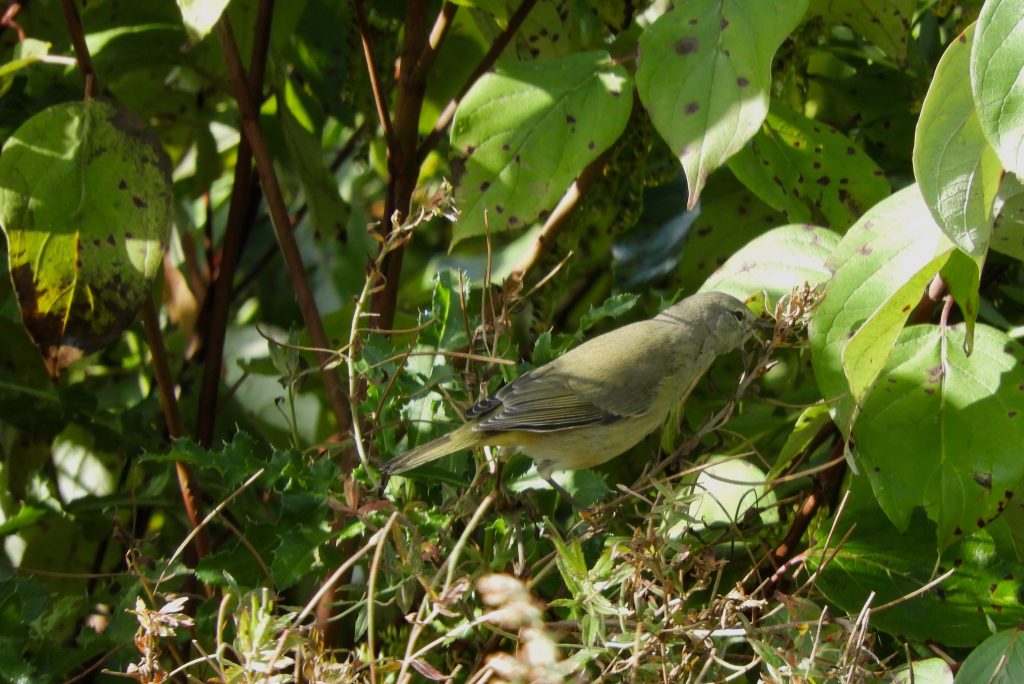RBG. Hendrie Valley, Burlington ON. October 5th. 2020. Following 24 hours of mixed, sometimes dirty, weather my companion and I sensed a good chance of rewarding birding this morning; and it certainly delivered. We racked up 52 species of birds and it took us three and a half hours to do a transect that usually takes two.
There were two Birds of the Day today, both special because of their quiet, fleeting scarcity, not because of the one thing they have in common, that neither is particularly engaging to look at. The second one, a Gray-cheeked Thrush, like all of its thrush cousins, is modest in behaviour and subtly and beautifully dressed in earth tones. I hadn’t seen one for many months, maybe a couple of years, and was pleased when one landed close to us. Here’s a photo of it, not spectacular – but precious in its own way.

My other Bird of the Day was an Orange–crowned Warbler, a bird that stands out for being uncommon, uncommonly plain and somewhat inappropriately named. We see very few of them here, they are much commoner on the west half of the continent, commoner to the point of being a bit tiresome. In some sort of compensation for their commonness, the western birds are much brighter than eastern individuals. (A middling yellow versus a greyish with a wash of yellow on the undersides). Perhaps the easterners are more likely to be overlooked than truly absent.

Seeing one today was sort-of anticipated, it is the right time of year. They are a latish migrant among warblers and we were examining an expanse of seedy herbaceous plants, their sort of place. The bird we found was searching for food, obligingly not too far from us, but made a point of digging deep and staying buried in the thick vegetation. Being a bit of a triumph propelled today’s Orange-crowned Warbler into shared My Bird of the Day status. And as to the orange crown, we didn’t see it, few do, it is rarely visible and said to be more obvious on bathing or scolding birds.
Our morning was as broadly rewarding for many notables as it was for the Gray-cheeked Thrush and the Orange-crowned Warbler. We found a few other late moving warblers: Northern Parula, Common Yellowthroat and Magnolia, Black–throated Green and Yellow–rumped Warblers. A Blue–headed Vireo, some Ruby–crowned Kinglets, two late Least Flycatchers and a few Green–winged Teal and two American Wigeons.
Enjoyed your photos and story immensely
Thankyou